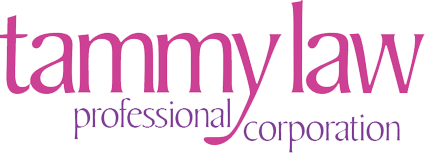When I speak to clients about collaborative law, one frequent worry is that the collaborative process takes away the option of “going to court”. To engage in collaborative law, both parties need to agree not to go to court. If either party chooses to do so, the collaborative process ends and both clients will need to find new lawyers to represent them at court. At first blush, this seems problematic. Questions that I have been asked include: Why should I agree to a process that would make it difficult for me to exercise my right to go to court? How does this help resolve my matter? Won’t this make the process more costly? These are all valid questions.
In fact, my experience has been that taking court of the equation is extremely empowering for clients and in fact removes barriers to settlement. When the threat of court is removed, the following really peculiar things start to happen:
- Clients are challenged to think about what is truly fair for their family rather than what the legal system believes is “fair” for their family. While the legal framework is available as a default, clients in collaborative processes usually come up with creative solutions that work for them.
- Clients quickly realize that slinging mud at one another is useless and more quickly engage in problem solving. The commitment to be non-adversarial forces parties to focus on the problem rather than the wrong.
- Clients are given the freedom to negotiate without the constant cat-and-mouse games that may characterize negotiations within the backdrop of litigation. There are no threats that if there is disagreement, court would be started tomorrow.
- Clients are encouraged to model problem-solving behaviours that become the basis for their continued relationship. Particularly when there are children involved, a separation does not end the relationship. Rather, it requires both parties to work out a new way to communicate and resolve disputes in the context of a new relationship. Threatening court every month is toxic to a continuing relationship.
- The solution becomes less about the lawyers and more about the clients. The client takes control when there is no court in the backdrop while the lawyer recedes to provide their clients with information about the legal framework and their own experiences as professionals who have worked with other divorcing or separating clients.
Recently, I had a collaborative meeting where all of the benefits to not having court hanging over the negotiation, became clear. In the beginning, I approached the meeting with trepidation. Although the clients had agreed to a collaborative process, the lawyer for the other party was not particularly known to be a “collaborative” lawyer among the bar. The clients were also thinking about departing significantly from the legal framework and contemplating some creative solutions to their problems.
The meeting turned out fabulously. There was no gamesmanship. No threat of walking away from the table and “starting court tomorrow”. No tense “standoff” at the negotiation table. No statements about what needs to be done to protect a client’s “legal entitlements”. Rather, both clients were focused on solving the problem and coming to agreements that would satisfy both person’s interests and needs. Legal information was imparted as reference points which were considered by both clients. When there was an impasse, discussions focused on how we could solve that problem rather than who is to blame.
This is the power of taking court from the equation. It allows clients the freedom to problem solve and to take ownership of creating a new future separate from each other. It allows lawyers to help settle cases rather than become obstacles to the settlement process.
If you are contemplating a collaborative family law process, you should definitely ask a collaborative professional to explain how taking court of the equation can be a benefit rather than a disadvantage to you. The answers you get may be surprising!


Comments are closed.